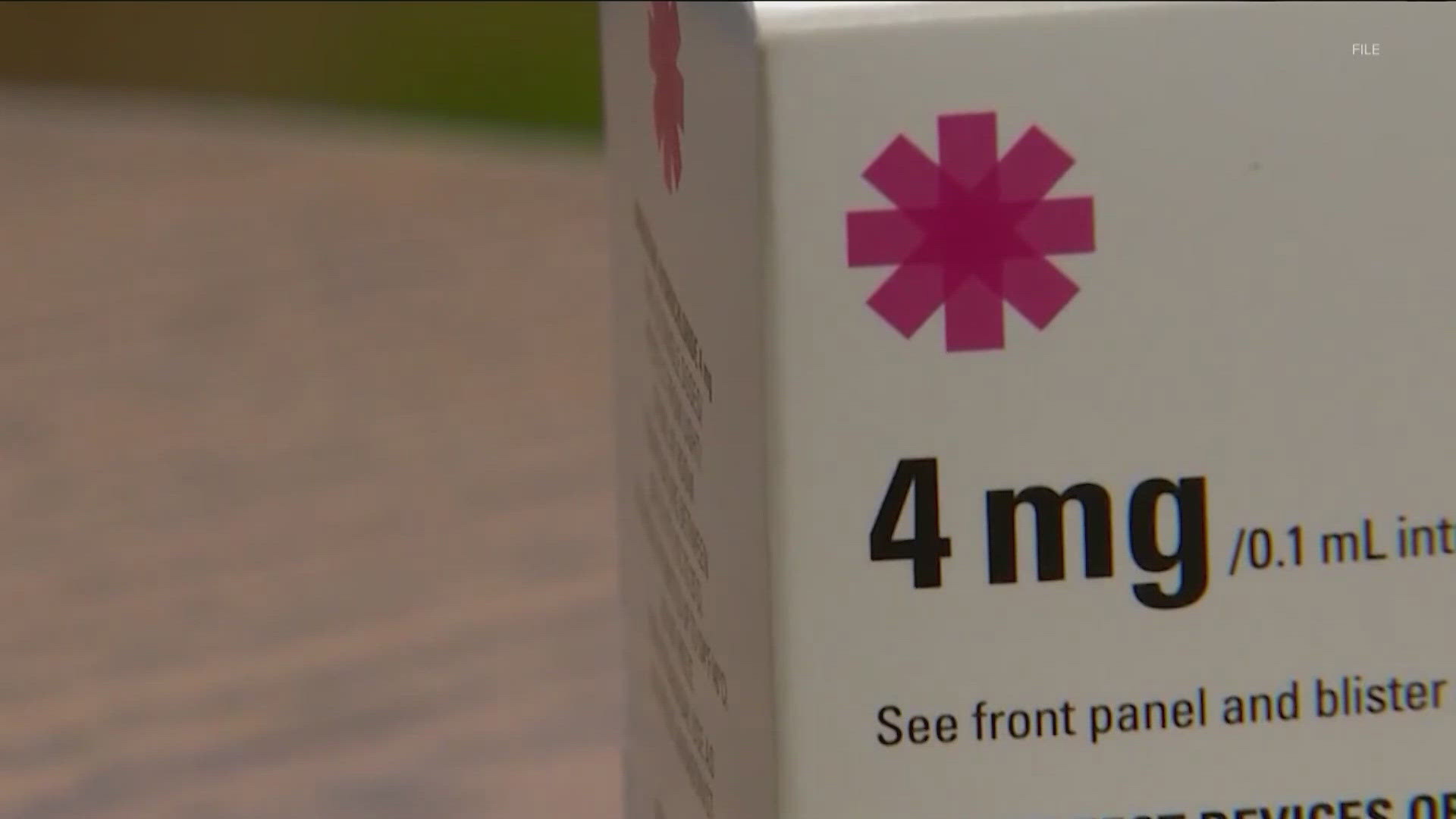AUSTIN, Texas — What Austin officials have called "the largest opioid overdose outbreak" in years appears to be slowing down. However, officials are still responding to double the amount of overdose calls they normally get.
Since Monday, Austin-Travis County EMS (ATCEMS) has responded to 79 suspected overdoses and confirmed four people have died. That number could rise to nine as the medical examiner's office investigates.
Officials said the calls started in Downtown Austin but eventually spread throughout the city. The overdose calls have been linked to multiple drugs from Xanax and K2 to crack cocaine, but medics suspect the drugs are laced with fentanyl.
In the meantime, different organizations and people are trying to educate the public and hand out Narcan, which can reverse the effects of an opioid overdose and save lives.
Austinite Sean O'Brien used to work as a musician for 20 years and said he also used to be addicted to drugs. O’Brien said he had a bad relationship with drugs, but they also brought him to where he is now: working as a program coordinator for the Travis County Overdose Prevention. O'Brien said he's been handing out Narcan.
“Music brought me all around the world. Drug addiction brought me to homelessness. It brought me to depravity,” O'Brien said. “We do targeted responses. We look for areas that are going to have lots of overdoses. We'll go to those areas and we will hand out Narcan. We hand out Narcan to any and everybody.”
O'Brien said the group hands out Narcan regularly, but especially during the past week. His organization and several others have been trying to help during this opioid overdose spike.
“We've not seen overdoses, especially to this number,” ATCEMS Chief Deputy Medical Director Heidi Abraham said.
She said in the past two days, there have been 13 more overdoses.
“We normally see two to three overdoses a day, so anything more than that is a pretty remarkable number,” Abraham said.
According to Abraham, ATCEMS usually hand out 165 Narcan kits in any given month. Medics have handed out double in just the past few days.
“All of the lives that were saved throughout the last couple of days have been due to Narcan,” Abraham said. “[The] Austin Police Department has been first on scene and has administered a number of doses of Narcan and absolutely saved folks' lives.”
More than 400 doses of Narcan have been given out. Critics have said using Narcan only encourages future drug use.
"The question is: Do you value the point you're making by criticizing Narcan, or do you value human life? And I know that I speak for our department when I say that we absolutely value saving a human life," ACTEMS Capt. Christa Stedman said.
Narcan once saved O'Brien's life.
“I was told it was heroin. You know, maybe there was fentanyl in it,” O'Brien said. “Next thing I know, I'm being shaken awake like, ‘Do you realize what happened to you?'"
O'Brien said he wouldn't be here without Narcan, and he thinks everyone should have it. O’Brien suspects people don't know the drugs they're taking could be laced with fentanyl. He said people will continue to do drugs and have overdoses, so the least they can do is help people stay alive.
"This is no longer an 'addict under the bridge' problem. This is an everyday person problem," O'Brien said. "Start having these conversations that are difficult to have because it's a true connection that we can really fight addiction. We can fight overdoses, and we can make an impact and keep people alive."
A heat map released by ACTEMS showed most calls have been concentrated downtown and near East Oltorf, off Interstate 35.
The Austin Police Department (APD) said those impacted by the overdoses have ranged in age from 20s to 50s and across all ethnicities. Some of the people have been unhoused, while others have been housed, and some were at their workplace while others were in public spaces.
According to APD, two people have been detained so far, leading to an arrest for felon in possession of a firearm. But further investigation would be needed for additional charges.
ATCEMS said the people who died have not all been identified, but their ages ranged from mid-30s to mid-50s.

